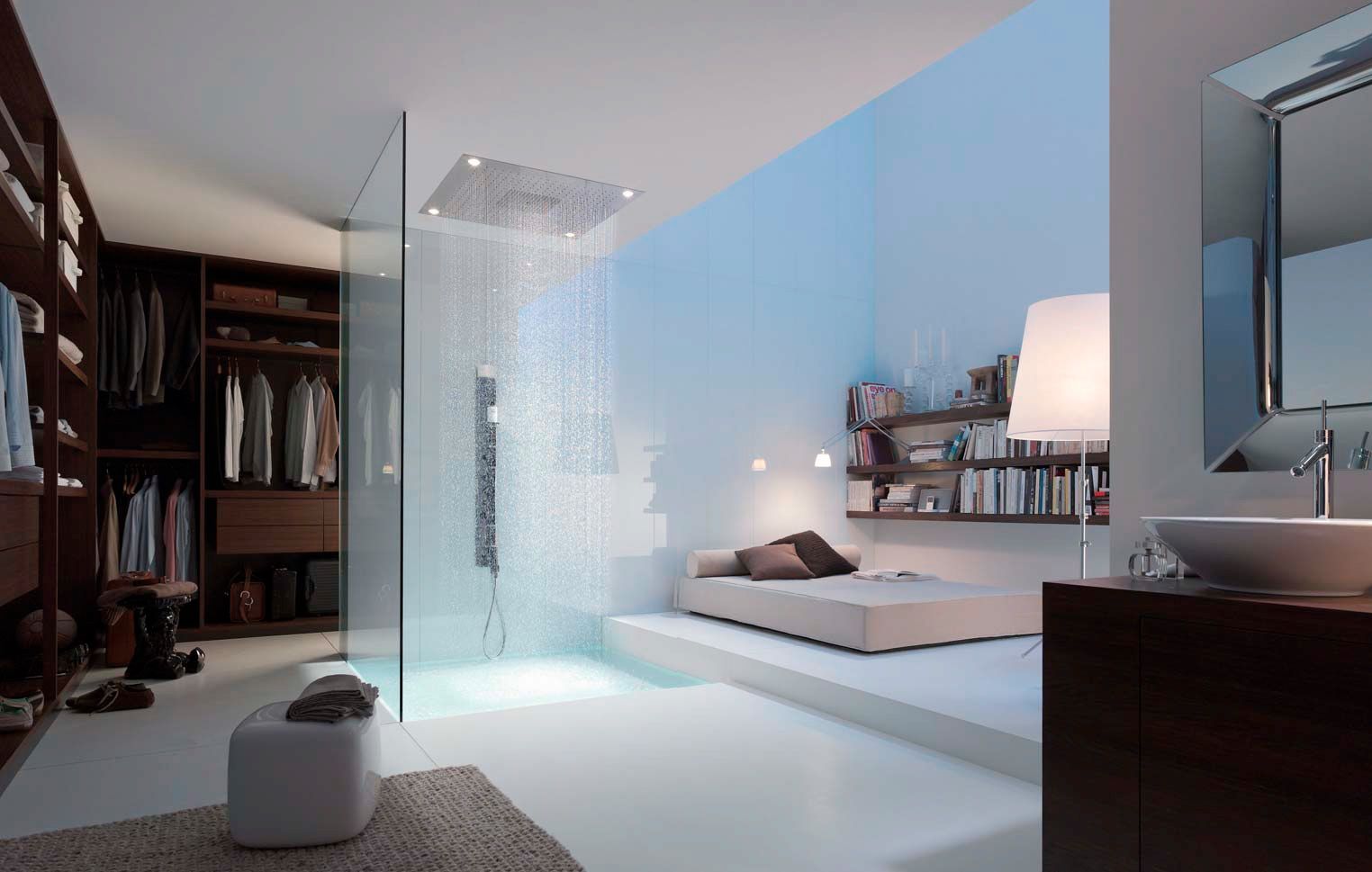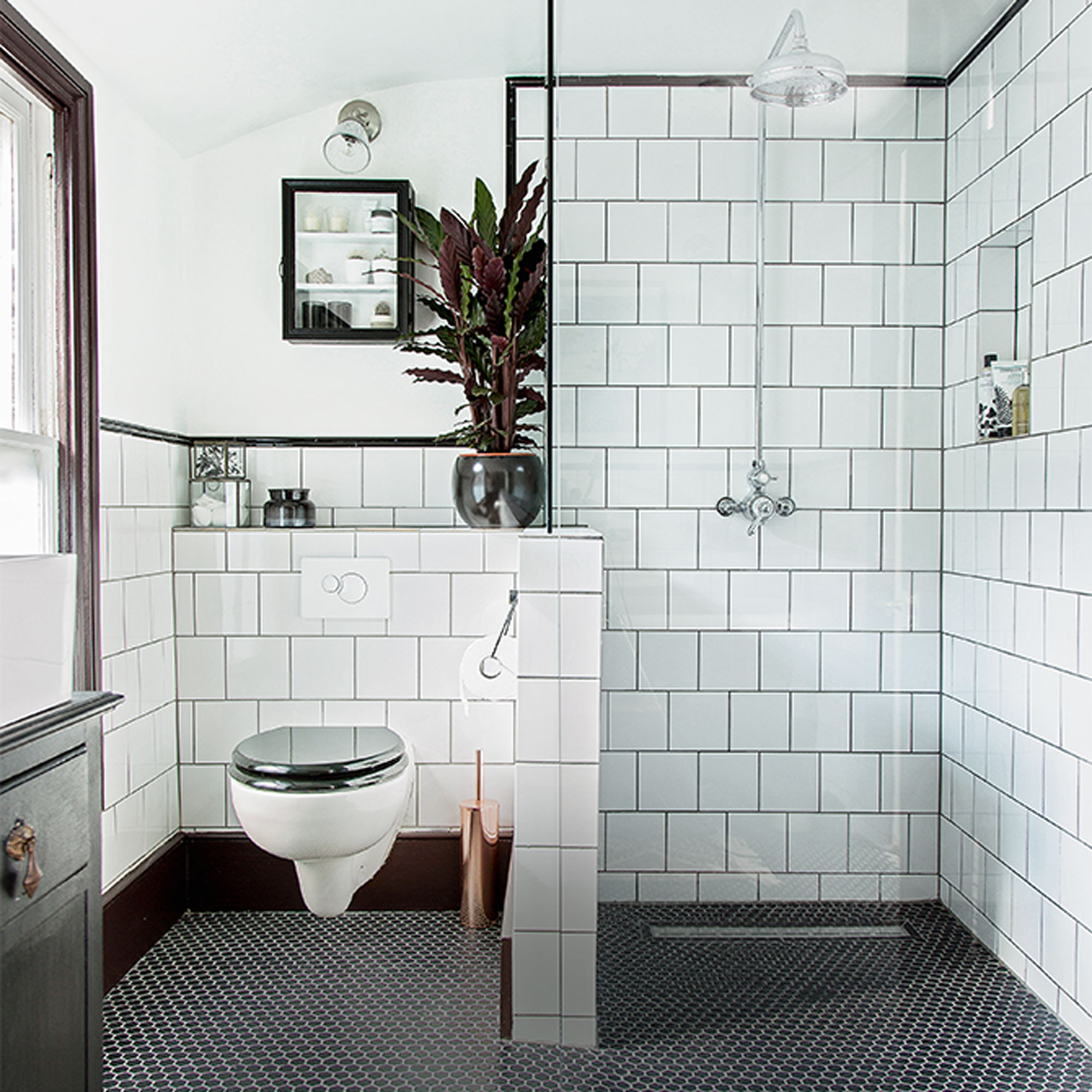The Allure of Open Plan Showers in Bedrooms: Open Plan Shower In Bedroom

Open plan showers, seamlessly integrated into the bedroom, offer a captivating blend of functionality and aesthetic appeal, transforming the bathing experience into a sanctuary of modern luxury. This design trend, often embraced by minimalist and contemporary homes, is more than just a stylistic choice; it embodies a harmonious connection between nature, space, and the human experience.
The Aesthetic Appeal of Open Plan Showers
The allure of open plan showers lies in their minimalist design, characterized by clean lines, uncluttered surfaces, and a sense of openness. The absence of walls creates a feeling of spaciousness, visually expanding the bedroom and blurring the boundaries between interior and exterior. The shower becomes a focal point, a sculptural element that enhances the overall aesthetic of the room.
Open Plan Showers and the Sense of Spaciousness
Open plan showers contribute to a sense of spaciousness by eliminating physical barriers and maximizing the flow of light and air. The absence of walls allows natural light to flood the bathroom, creating a bright and airy ambiance. This sense of openness is further enhanced by the use of transparent materials, such as glass, which visually expands the space and creates a seamless transition between the shower and the bedroom.
Architectural Styles that Complement Open Plan Showers
Open plan showers seamlessly integrate into various architectural styles, enhancing their unique characteristics.
- Modern Architecture: The clean lines and minimalist aesthetic of open plan showers complement the sleek and functional design principles of modern architecture. The use of natural materials, such as stone and wood, further enhances the connection with nature, a key element of modern design.
- Contemporary Architecture: Open plan showers are a natural fit for contemporary architecture, with its focus on openness, light, and minimalist design. The use of bold geometric shapes and innovative materials, such as metal and glass, complements the modern and sophisticated aesthetic of contemporary homes.
- Minimalist Architecture: The minimalist design philosophy emphasizes simplicity, functionality, and a focus on essential elements. Open plan showers align perfectly with these principles, creating a clean and uncluttered space that promotes a sense of tranquility and serenity.
Design Considerations for Open Plan Showers

Creating a safe and functional open plan shower requires careful consideration of design elements. The key is to balance the aesthetic appeal of an open shower with the practical needs of a functional space. This involves addressing ventilation, drainage, and waterproofing, and incorporating privacy elements.
Ventilation
Proper ventilation is crucial for preventing moisture buildup and mildew in an open plan shower. Here are some essential considerations:
- Exhaust Fan: Install a powerful exhaust fan to quickly remove steam and moisture. Choose a fan with a high CFM (cubic feet per minute) rating for effective ventilation.
- Window: A window provides natural ventilation, but ensure it is large enough to allow adequate airflow. Consider using a window with a privacy film or frosted glass for discreetness.
- Air Circulation: Ensure adequate air circulation in the bathroom by keeping doors and windows open for a brief period after showering. This helps to remove excess moisture.
Drainage
Effective drainage is essential to prevent water from pooling on the floor and causing damage. Here are key considerations:
- Floor Slope: The shower floor should slope towards the drain at a minimum of 1/4 inch per foot. This ensures water flows quickly and efficiently.
- Drain Size: Choose a drain with a large enough diameter to handle the water flow. A 2-inch drain is generally recommended for open plan showers.
- Drain Location: Position the drain strategically to facilitate efficient water flow. It should be located at the lowest point of the shower floor.
Waterproofing
Waterproofing is critical to prevent water damage to the bathroom and surrounding areas. Here are key considerations:
- Shower Pan: Install a waterproof shower pan, which is a pre-fabricated pan designed to contain water. Ensure it is properly sealed and connected to the drain.
- Waterproof Membrane: Apply a waterproof membrane to the shower walls and floor. This creates a barrier that prevents water from penetrating the underlying structure.
- Sealants: Use high-quality sealants around all joints, corners, and penetrations to prevent water leaks. Apply sealant generously and ensure it is fully cured before using the shower.
Privacy Elements
Open plan showers can be designed to offer varying levels of privacy. Here are some suggestions:
- Frosted Glass: Frosted glass provides a degree of privacy while still allowing light to pass through. It can be used for the shower enclosure or for a partition between the shower and the rest of the bathroom.
- Curtains: Curtains offer a more flexible privacy option. Choose opaque fabric or a combination of sheer and opaque panels for varying degrees of privacy. Install a sturdy curtain rod that can withstand the weight of the curtains when wet.
- Partition Walls: A partial wall can create a sense of separation without fully enclosing the shower. Use materials that are moisture-resistant and complement the bathroom’s design.
Advantages and Disadvantages of Open Plan Showers

The decision to incorporate an open plan shower into your bedroom is a significant one, demanding careful consideration of its potential benefits and drawbacks. Open plan showers offer a unique blend of aesthetics and functionality, but it’s crucial to weigh these aspects against the potential challenges they present.
Benefits of Open Plan Showers
The allure of open plan showers stems from their ability to create a sense of spaciousness, enhance natural light, and elevate the bathroom experience to a spa-like sanctuary.
- Increased Natural Light: Open plan showers allow natural light to flood the space, creating a bright and airy atmosphere. This can be particularly beneficial in bedrooms with limited natural light, promoting a sense of well-being and vitality. Imagine waking up to the gentle rays of the morning sun showering your bathroom, setting the tone for a positive and energized day.
- Enhanced Space Flow: By eliminating the physical barrier of a shower enclosure, open plan showers create a seamless flow between the bedroom and bathroom areas. This can make even small spaces feel more expansive, promoting a sense of openness and tranquility. Picture a bedroom where the shower blends seamlessly with the surrounding space, creating a unified and inviting atmosphere.
- Spa-Like Experience: Open plan showers can transform your bathroom into a luxurious spa-like retreat. The absence of walls and enclosures creates a sense of openness and freedom, allowing you to fully immerse yourself in the showering experience. Imagine stepping into your open plan shower, surrounded by natural light and the sounds of nature, feeling your worries melt away as you embrace the tranquility of your personal spa.
Potential Drawbacks of Open Plan Showers
While open plan showers offer undeniable benefits, they also come with certain drawbacks that must be carefully considered.
- Privacy Concerns: The absence of walls and enclosures in an open plan shower can raise privacy concerns, especially if the bedroom is shared or if the shower is visible from other areas of the house. Consider the potential for privacy issues and whether they are acceptable in your living situation. For example, if you share your bedroom with a partner or family member, an open plan shower might not be the best option.
- Potential for Water Damage: The open nature of an open plan shower increases the risk of water damage, as water can easily splatter onto surrounding surfaces. This requires careful planning and consideration of materials and finishes that are resistant to moisture. Consider using waterproof flooring, wall coverings, and furniture to minimize the risk of damage. It’s also important to ensure proper drainage and ventilation to prevent water from accumulating.
- Increased Cleaning Requirements: Open plan showers require more frequent cleaning than enclosed showers, as water can splatter onto surrounding surfaces. This can be a significant consideration, especially if you are time-constrained or prefer minimal maintenance. Plan for regular cleaning routines and consider using materials that are easy to clean and maintain.
Comparison of Open Plan and Enclosed Showers, Open plan shower in bedroom
| Feature | Open Plan Shower | Enclosed Shower |
|---|---|---|
| Space | Creates a sense of spaciousness and openness | Can make small bathrooms feel cramped |
| Light | Allows for maximum natural light | Can feel dark and enclosed |
| Privacy | Offers less privacy | Provides greater privacy |
| Water Damage | Higher risk of water damage | Lower risk of water damage |
| Cleaning | Requires more frequent cleaning | Requires less frequent cleaning |
| Cost | Can be more expensive to install | Generally less expensive to install |
